Are you starting or scaling a WordPress site and wondering how much traffic can WordPress handle? 
WordPress now accounts for a market share of 43% of all websites, and 2,831 of the top 10,000 sites are built using WordPress [1][2]. Some of these sites have very high traffic, such as Bloomberg, Creative Commons and TechCrunch.
This article looks at the different levels of WordPress site traffic, and since choice of web host is a key factor, we particularly focus on hosting plans.
We’ll also take a look at other factors which can improve the time it takes for your website to load for visitors, allowing you to have higher traffic.
How WordPress sites are delivered to the user
WordPress sites store content in a database. When someone accesses your site, the content from the database is read and rendered on the web page.
The more traffic you have, the more that process is repeated.
The WordPress software needs hardware to run on, which is a web server. Web servers are supplied by web hosting companies and vary in their ability to deliver content quickly.
How much traffic can WordPress handle with different hosting plans?
There are different types of web hosting available, ranging from cheaper to expensive. The more expensive options have the ability to handle the highest traffic. Many web hosting companies offer several types of hosting.
For high traffic sites, the WordPress Codex recommends splitting WordPress into layers, each handling a different aspect of the software:
- Apache2 / NGINX frontend server(s) – to handle page rendering and site administration.
- MySQL/MariaDB database server – for easily managing data using tables.
- Varnish / NGINX HTTP proxy layer – to handle initial requests from users.
- CDN or image server – to store and serve all media files, taking the load off your website.
Traditional hosting vs cloud hosting
Traditional hosting uses a single web server, whereas cloud hosting uses a distributed network of virtual web servers to host a website.
Web hosting comes in the flavors listed below, which can be traditional or cloud based.
Shared hosting (10,000 to 400,000 visits per month)
How much traffic can WordPress handle with shared hosting? Shared hosting is the simplest type of hosting and is suitable for low traffic websites. As the name suggests, websites on a shared host share the same server resources, keeping costs down. The downside is that due to sharing resources, shared hosting doesn’t cope so well with spikes in traffic.
Bluehost offers shared hosting at an affordable price. Their shared hosting can manage visits of about 15,000 per month for the Basic plan, 50,000 per month for the Plus plan, 200,000 for the Choice plan and 400,000 for the Pro plan.

SiteGround also offers shared hosting plans. Their Start Up plan can handle about 10,000 visits per month. Their Grow Big plan can handle about 100,000 visits per month and the Go Geek plan can deal with about 400,000 monthly visits.
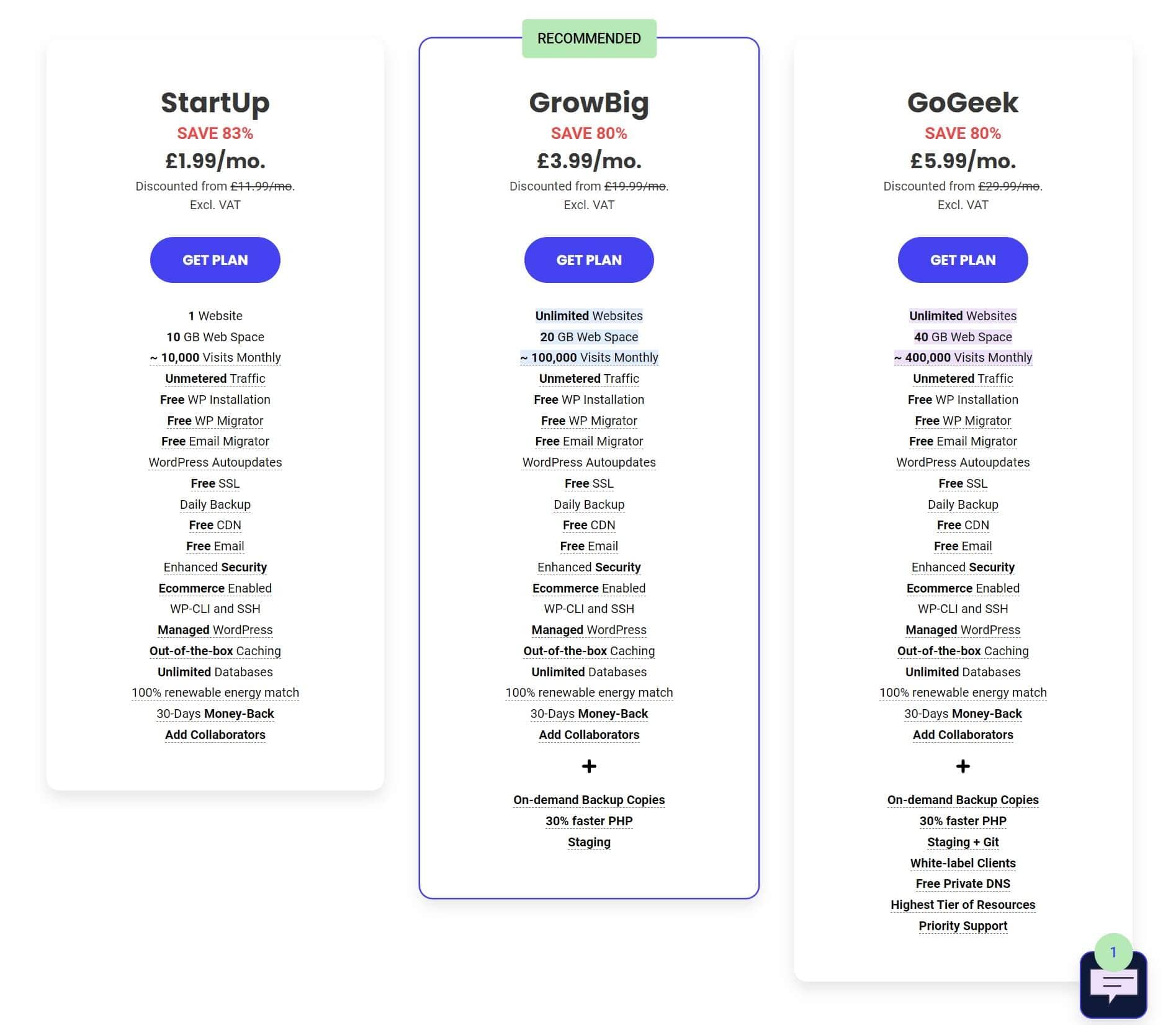
Managed WordPress hosting (25,000 to 2.5 million visits per month)
How much traffic can WordPress handle with managed hosting? Managed WordPress hosting is a step up from shared hosting. Managed hosts offer WordPress-specific customizations which keep website delivery times low. They also take care of backups, keep sites secure, provide staging sites and offer premium customer support. Managed hosting is good for customers that want the technical aspects of hosting a website managed for them, but it comes at a greater cost.
An example of a managed hosting company is Kinsta. Kinsta’s Starter plan allows for 25,000 visits per month. This goes up to 2.5 million visits per month for the Enterprise 4 plan.
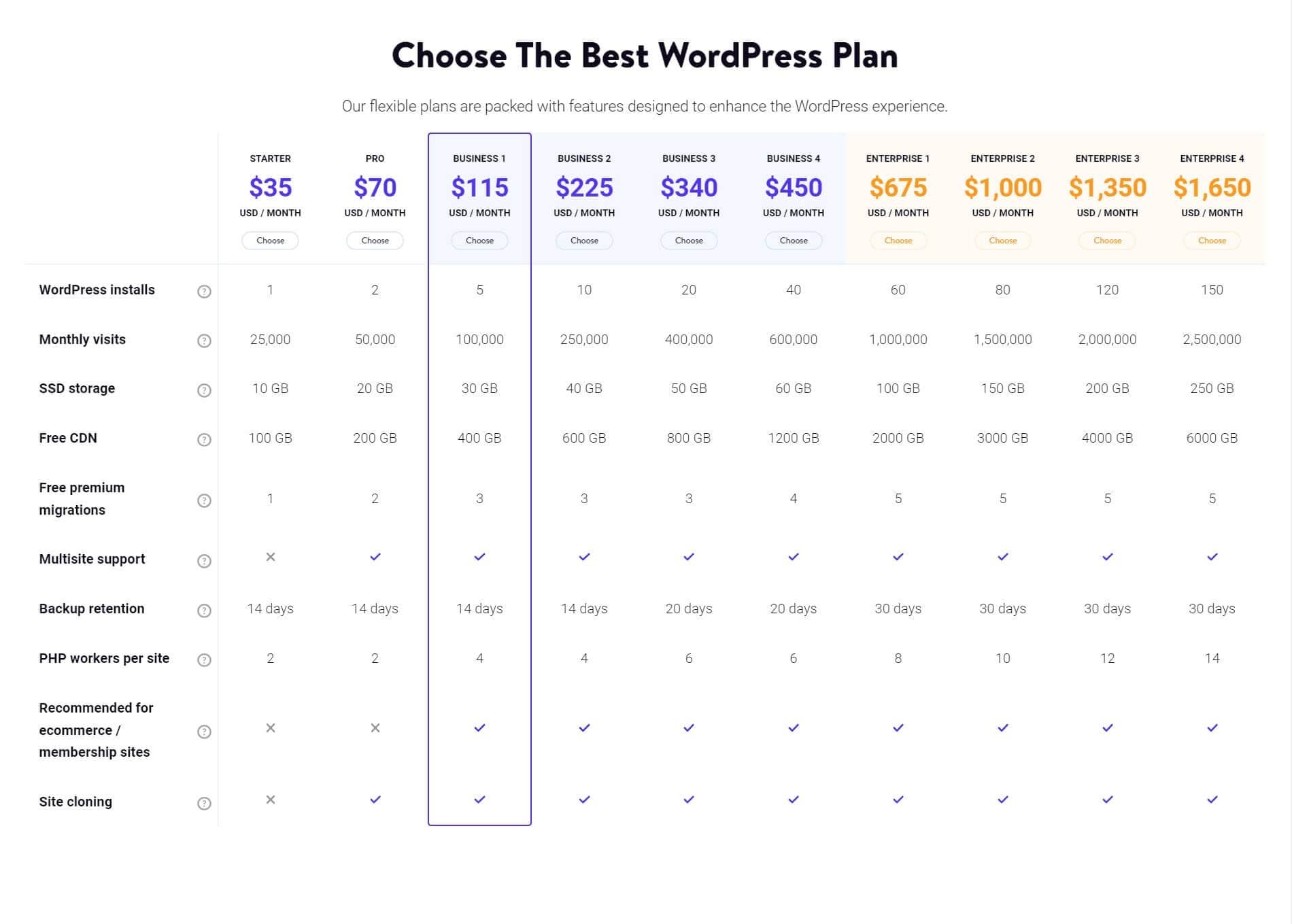
Another example of managed hosting is WP Engine. WP Engine’s plans vary from 25,000 visits a month (Startup plan) to 400,000 visits per month (Scale plan).
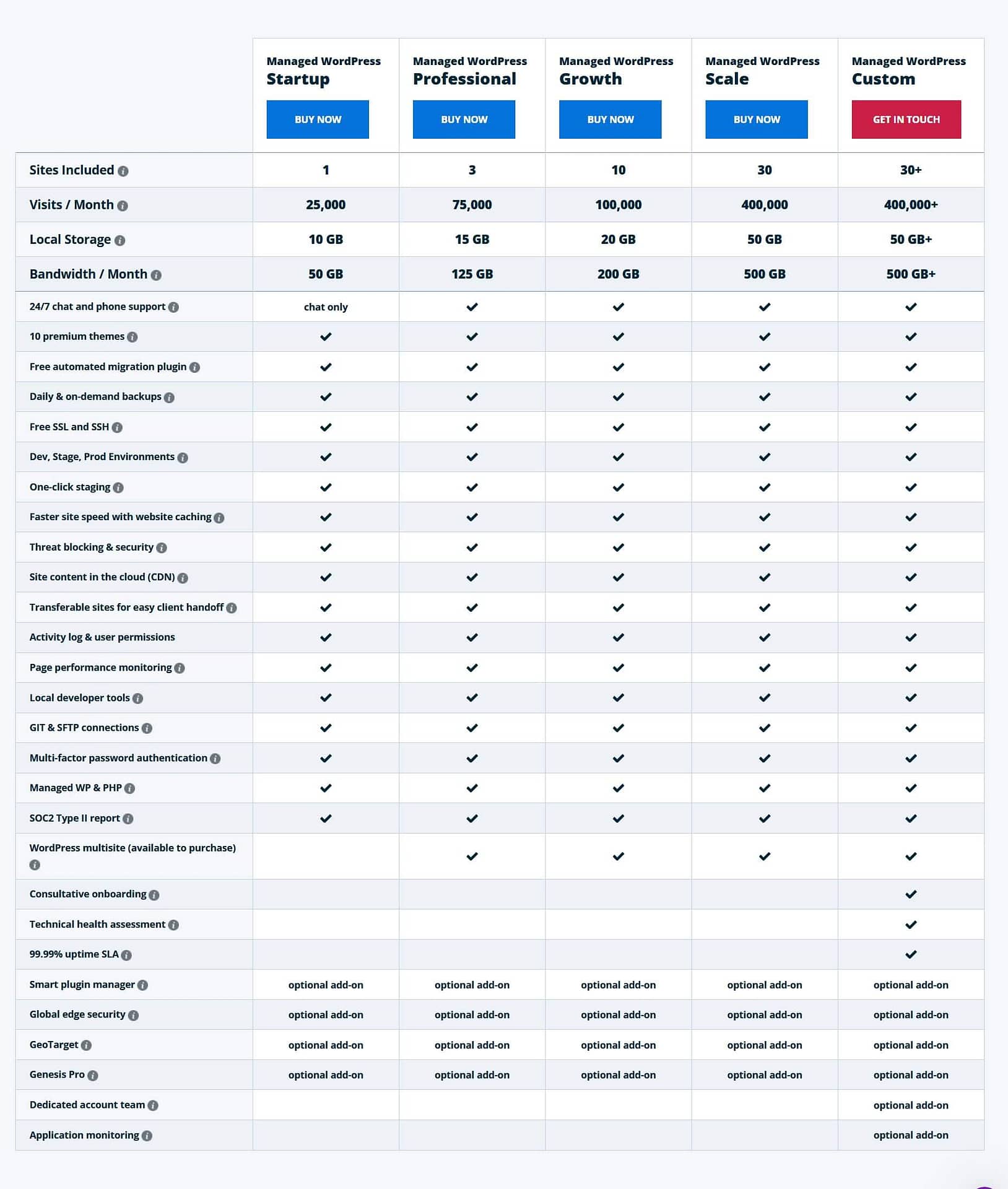
 Read our review of the best managed WordPress hosting.
Read our review of the best managed WordPress hosting.
VPS hosting (500,000 to 6 million visitors per month)
VPS (virtual private server) hosting is similar to shared hosting, but websites don’t have to share the same resources. Virtualization technology allows for the web server to be divided into partitions, each with their own resources. It’s suitable for medium traffic WordPress websites that have outgrown shared hosting. However, VPS hosting requires that the website owner have some technical expertise to manage their site.
A company that offers cloud VPS hosting is Cloudways. Cloudways standard plans on Digital Ocean start with 1TB of bandwidth, which caters to an estimate of about 500,000 visitors a month. Their highest tier plans come with 12TB of bandwidth, which could handle about 6 million visitors per month.

Another option for cloud VPS hosting is Runcloud. Runcloud actually provides a server control panel which manages cloud hosting elsewhere (e.g., Vultr or Google Cloud). By cutting out the middleman, prices are kept low. Plans start at $6.67/month and can handle traffic amounts similar to Cloudways.
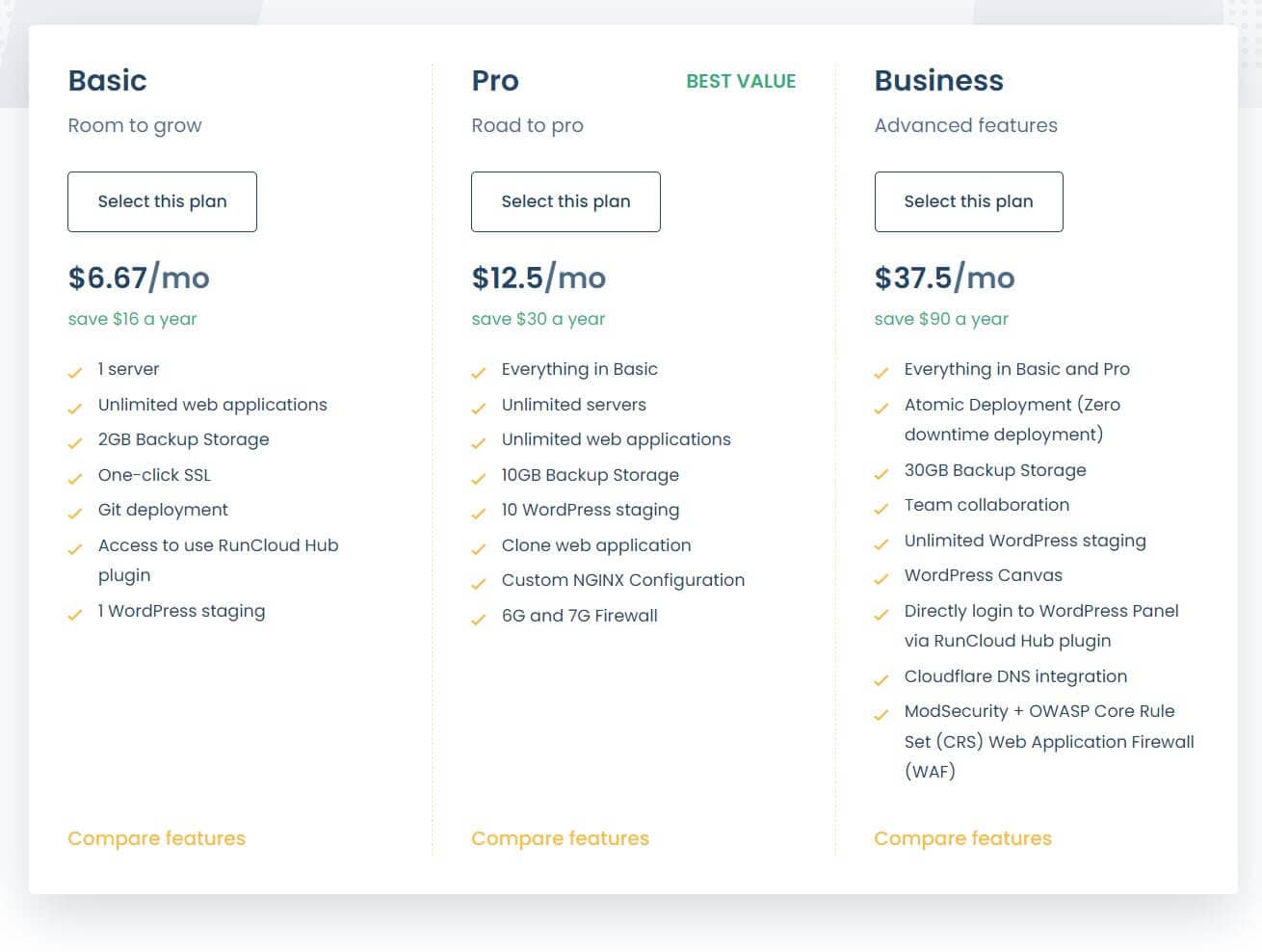
 Read our review of the best cloud hosting companies here.
Read our review of the best cloud hosting companies here.
 Read our review of Runcloud here.
Read our review of Runcloud here.
 Read our comparison of Cloudways vs Runcloud here.
Read our comparison of Cloudways vs Runcloud here.
Dedicated hosting (5 million+ visitors per month)
How much traffic can WordPress handle with dedicated hosting? Suitable for higher traffic sites, dedicated hosting allocates a complete server with all its resources to a single website. Dedicated servers offer more control for the user, with flexibility in customization as a key factor. They can be optimized for improved security and performance.
InMotion hosting offers dedicated hosting which is also managed. It starts at 10TB/month bandwidth. This can handle up to 5 million visitors a month. Their pricier dedicated servers can handle tens of millions of visitors every month due to unmetered bandwidth, multiple SSD drives, and dozens of cores.
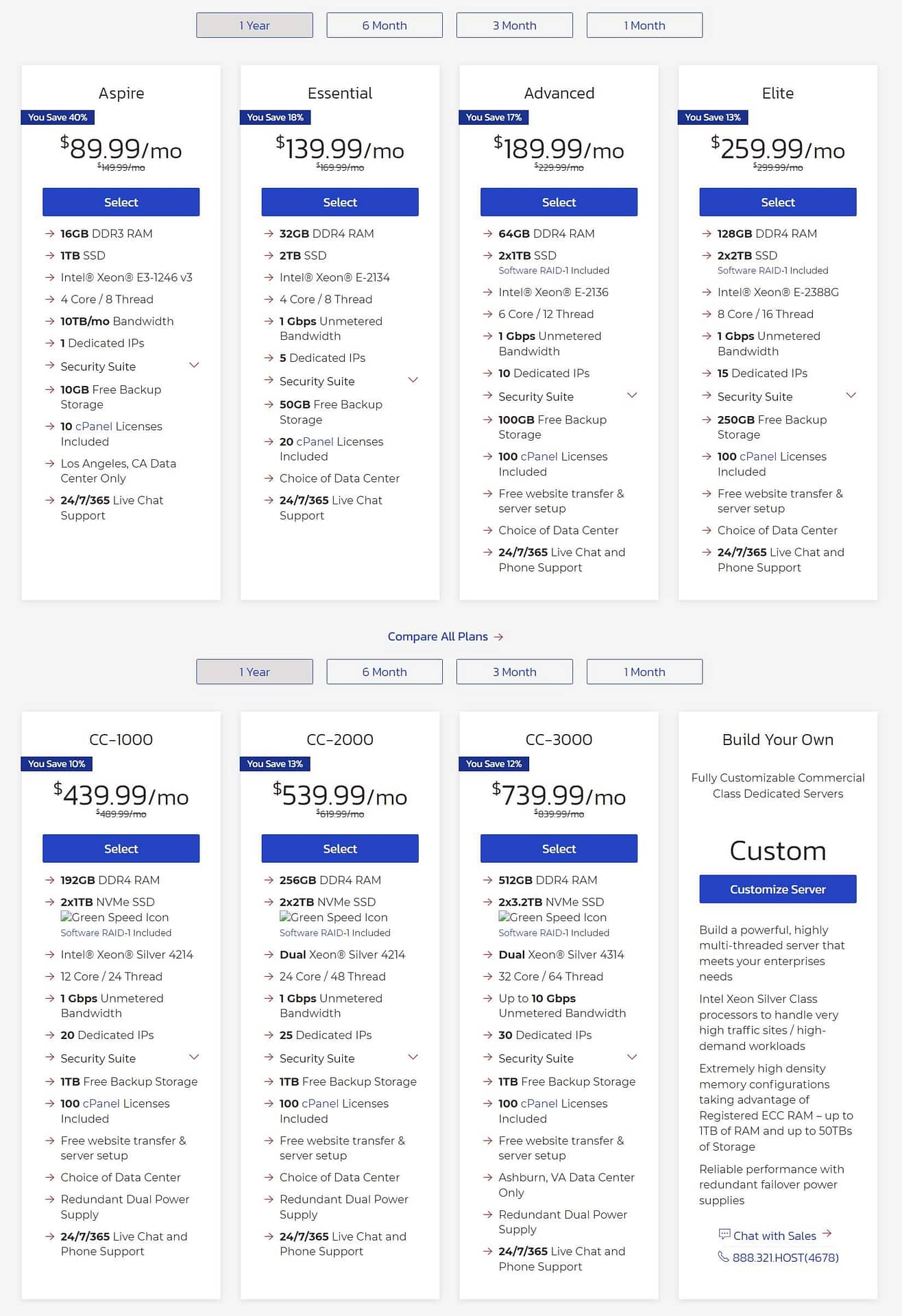
Other providers that offer dedicated hosting include WP Engine and HostGator.
Enterprise hosting (millions to billions of visitors per month)
Enterprise hosting is suitable for the largest companies with the highest traffic. Enterprise hosting is scalable, has the best security and the highest uptime.
WordPress VIP offers enterprise hosting. Their plans start at $25,000/year. Their service level agreement guarantees a minimum of 99.9% or greater uptime.
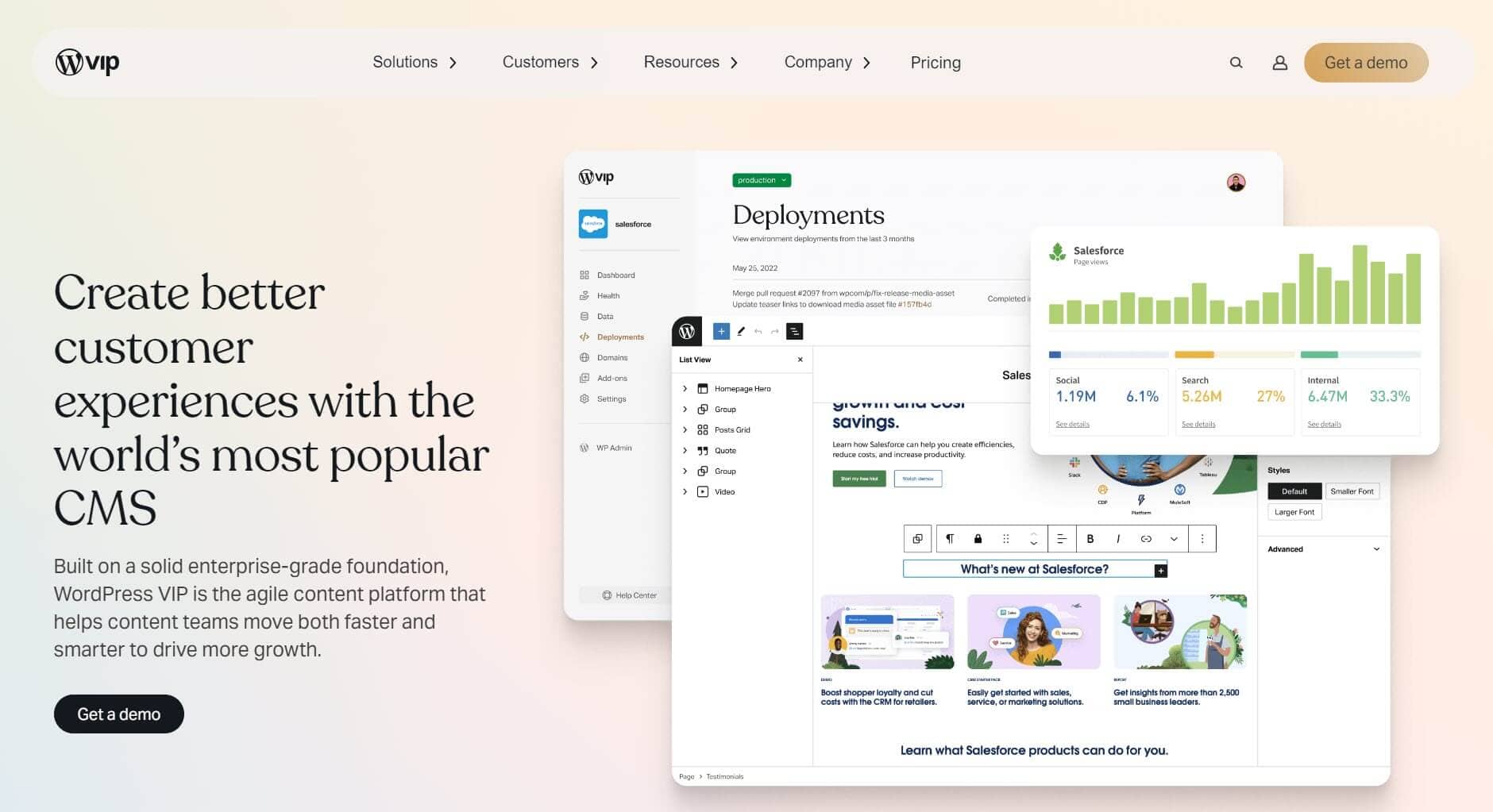
Enterprise hosting can handle millions of visits per month. Some examples of enterprise hosted websites are Hachette Book Group, The New York Post and VentureBeat.
So, how much traffic can WordPress handle with enterprise hosting? Enterprise cloud hosting on Google Cloud or Amazon Web Services can be built and configured to deal with even more traffic – billions of visits per month.
Things you can do so that your site can handle more traffic
These tips will help your site remain lean and fast loading. You can find more speed optimization tips here.
- Use a lightweight theme
- Use fewer plugins
- Use a caching plugin
- Optimize your images
- Use a CDN
- Guard against bad traffic
Use a lightweight theme
Lightweight themes are those that load quickly and easily, not taking up too much bandwidth. They are built to be minimalist, with plugins doing the heavy lifting on a site.
Examples of lightweight themes are GeneratePress, Neve and Kadence.
WP Rocket speed tested many of these themes and they came out with page load times of under 1000 ms.
 Read our full review of Astra here.
Read our full review of Astra here.
Use fewer plugins
The more plugin data that’s loaded on the frontend of your website, the slower it will be.
So don’t use too many plugins, and watch out for ones that load on every page when they are only required on certain pages (e.g., Contact Form 7).
And be mindful of page builder bloat! Consider using the native block editor instead.
Use a caching plugin
A caching plugin speeds up your site by creating a static version of your pages so that the web server doesn’t need to query the database each time your users visit.
Some free caching plugins are LiteSpeed Cache or W3 Total Cache.
Or you can opt for a paid solution: WP Rocket is the most popular paid caching plugin.
 Read more about caching and our interview with Hristo Pandjarov of SiteGround about their CachePress caching plugin.
Read more about caching and our interview with Hristo Pandjarov of SiteGround about their CachePress caching plugin.
Optimize your images
Large image sizes can really slow down a website, and if you have a lot of users, it will consume your bandwidth. Therefore you should optimize your images for quicker delivery.
Use a plugin such as Optimole to reduce the size of your images and save bandwidth for your users. Optimole compresses images and serves them in next-generation formats, and also includes lazy loading so that images are only loaded when the user scrolls down to them.
Use a CDN
A CDN, or Content Delivery Network, loads static content (images, JS and CSS) from a network of servers around the world. This means that content can be loaded from a server closer to the user geographically, saving time. Servers on a CDN are also optimized for static content delivery.
 Read more about using a CDN and our recommendations.
Read more about using a CDN and our recommendations.
Guard against bad traffic
Bad traffic is the kind of website traffic you don’t want to attract – it’s from hackers, spam bots and DDoS attacks.
Using a firewall will protect your site from unwanted traffic, and prevent hogging valuable bandwidth. Firewall plugins include Sucuri and Wordfence.
A service like Cloudflare’s DDoS protection service will protect your website from DDoS attacks.
Our summary on how much traffic can WordPress handle 
Don’t be afraid of hosting high traffic sites with WordPress. WordPress hosts can handle a few thousand visitors to virtually unlimited traffic, depending on your choice of host and website setup. We hope that we answered the question of “how much traffic can WordPress handle?” well.
Let us know in the comments if you have any further thoughts on the subject!
